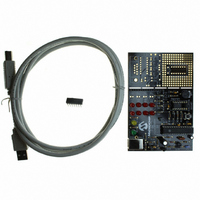DV164101 Microchip Technology, DV164101 Datasheet - Page 43

DV164101
Manufacturer Part Number
DV164101
Description
KIT DEV PICKIT1 FLASH 8/14PIN
Manufacturer
Microchip Technology
Series
PICkit™ 1r
Type
MCUr
Specifications of DV164101
Contents
PIC Kit 1 Circuit Board, CD-ROMs, USB Interface Cable and Booklet
Processor To Be Evaluated
PIC12F675
Interface Type
USB
Silicon Manufacturer
Microchip
Core Architecture
PIC
Core Sub-architecture
PIC12, PIC16
Silicon Core Number
PIC12F, PIC16F
Silicon Family Name
PIC12F6xx, PIC16F6xx
Rohs Compliant
NA
Lead Free Status / RoHS Status
Lead free / RoHS Compliant
For Use With/related Products
Microchip's 8-14 Pin FLASH Microcontrollers
For Use With
AC164122 - BOARD DAUGHT PICTAIL SD/MMC CARDAC164120 - BOARD SIGNAL ANALYSIS PICKIT
Lead Free Status / Rohs Status
Lead free / RoHS Compliant
Other names
DV164101R
DV164101R
DV164101R
Available stocks
Company
Part Number
Manufacturer
Quantity
Price
Company:
Part Number:
DV164101
Manufacturer:
Microchip Technology
Quantity:
135
C.1
C.2
C.3
2004 Microchip Technology Inc.
INTRODUCTION
HIGHLIGHTS
LESSON 1 – SWITCH DEBOUNCING
Appendix C. PIC12F675 Programming Projects
This appendix contains introductory lessons for users new to PICmicro
controller units (MCU). The programming projects in this appendix describe different
concepts in controlling the PIC12F675 PICmicro microcontroller unit (MCU). Each
lesson includes instructions for running a program demo that illustrates each of the
concepts listed below in Section C.2. It is best to follow the lessons in sequential order,
for each lesson builds upon the previous one. (The hex files and source code for the
lessons can be found on the PICkit
The following lessons are discussed in this chapter:
Lesson 1 – Switch Debouncing
Lesson 2 – State Machines
Lesson 3 – Interrupts
Lesson 4 – Analog-to-Digital Converters and Comparators
Lesson 5 – Data Tables in Program Memory
Lesson 6 – Using EEPROM Memory
Lesson 7 – Frequency Counting with Timer1 Gate
Mechanical switches play an important and extensive role in practically every
computer, microprocessor and microcontroller application. Mechanical switches are
inexpensive, simple and reliable. In addition, switches can be very noisy. The apparent
noise is caused by the closing and opening action that seldom results in a clean
electrical transition. The connection makes and breaks several, perhaps even
hundreds, of times before the final switch state settles.
The problem is known as switch bounce. Some of the intermittent activity is due to the
switch contacts actually bouncing off each other. Imagine slapping two billiard balls
together. The hard non-resilient material doesn't absorb the kinetic energy of motion.
Instead, the energy dissipates over time and friction in the bouncing action against the
forces push the billiard balls together. Hard metal switch contacts react in much the
same way. Also, switch contacts are not perfectly smooth. As the contacts move
against each other, the imperfections and impurities on the surfaces cause the
electrical connection to be interrupted. The result is switch bounce.
The consequences of uncorrected switch bounce can range from being just annoying
to catastrophic. For example, imagine advancing the TV channel, but instead of getting
the next channel, the selection skips one or two. This is a situation a designer should
strive to avoid.
PICKIT
™
™
1 Flash Starter Kit CDROM.)
1 FLASH STARTER KIT
USER’S GUIDE
DS40051D-page 39
®
micro-












